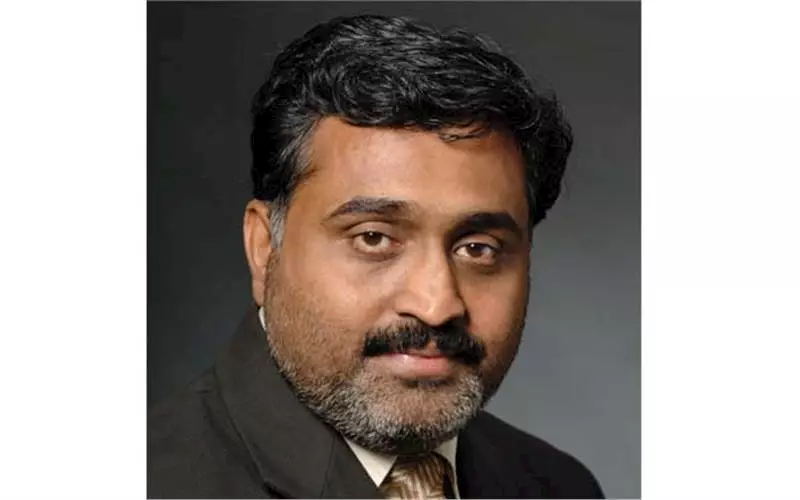Rajendrakumar Anayath: I want to create a Netflix for the printing industry
I envision a repository where all its history, achievements, and contributions are documented and made available to printing enthusiasts and future generations, says Prof Dr Rajendrakumar Anayath, former vice-chancellor, DCRUST, Haryana in the Print Guru series.
05 Jan 2024 | By Dibyajyoti Sarma
What is the USP of the print and packaging industry in India?
We have many visionary and ambitious entrepreneurs with great passion for print, with excellent infrastructure and know-how about print and packaging. Our USP would be the affordable production capability with precise quality for the global market with minimum TAT.
As an educator, what have been the two biggest problems you have faced?
One, not able to attract the best brains towards printing technology and two, the disconnect of institutes with the industry The teaching pedagogy and content never got in sync with the industrial needs.
How do you think these obstacles could be tackled creatively?
The printing technology syllabus should be made broad-based with present scientific and technological advancements, through active participation of the print and packaging industry in education and skilling. Unfortunately, this is not happening. We have to remember that it is the industry that needs the best minds, not the other way. Students today have a multitude of glamorous options. Print industry associations should make concrete efforts to portray its real contribution among people through media and other platforms. Inter- and intra-connect among our institutes need to be strengthened. All our institutes should collaborate with other global or Indian institutes so that synergetic learning and research are made possible.
Which is your favourite subject and why is it important?
Colour science and offset printing. Colour has always fascinated me. Without colour, you can’t enjoy life. Offset is still the most reliable print process, where there is tremendous scope for improvement. Its consistent quality and cost-effective productivity (especially long-run jobs) and process always created a fascination in me.
Today, you are a teacher. Who was your guru, and why so?
I am fortunate to have some great influencers in my academic life. These include Prof Vilko Ziljak, Prof Arved Carl Hubler, Prof KJ Kamath, Kiran Prayagi, C Dinachandran, PP Dinesan, TJ Joseph, Prof KPP Pillai, Gunter Kepler, Dr Helmut Kipphan, Dieter Kirchner. There are a few more from the humane and philosophical perspective, such as Swami Chinmayananda, and Prof Richard Dawkins. All of them have taken me through the mesmerising world of printing and philosophy with great passion. They all motivated me to go deep into the topics and life.
One innovation you implemented after listening to your student?
Years ago, I started to conduct open textbook exams after listening to my students and of course, I was convinced too.
Were you the minister of printing and packaging, how would you tackle the industry's problems creatively?
Raw material availability and pricing need to be stabilised across the country. I will accord industry status to printing and packaging, which is long overdue. Then, of course, I will take every step to make India the world’s printing capital. I believe we have everything to become one. It will create high-quality jobs in our country, and every other industry will benefit from it. Also, I would ensure that printing and packaging assume the same reputation among job seekers, professionals and the public at large like IT, banking and automobile.
What ingredient do you seek among your young disciples?
The mindset to explore, passion to innovate, and dedication to achieve what you sincerely believe in. Everything else to succeed comes along.
An article/listing in a publication that impressed you?
Many articles came in IARIGAI (International Association of Research Institutes for the Graphic Arts Industry) and in Acta Graphica.
Your present preoccupation in the field of research?
Currently, four students are doing research under my co-guidance. I am actively involved with a couple of universities in India and abroad for both teaching and research. After completing two tenures of vice-chancellorship successfully, my mind is brimming with many novel ideas, but I have yet to decide the way to move along. Now, it’s time to reflect upon, observe and gather insights to decide what to do next.
One project you are excited about?
I want to create a Netflix for the printing industry, where all its history, achievements, contributions and intricacies of the technology are well captured, documented and made available to printing enthusiasts and for future generations.
Assuming you can align with a print or packaging association, what would be the three most important things you would expect from it?
One, express industry challenges and expectation to academia. Two, support training of teachers and students in current technology. Three, involve teachers and students in real time industrial projects and challenges.
The industry needs skilled professionals on the shopfloor, and different printing education institutes have been churning out printing professionals for decades now. Still, there seems to be a disconnect between industry and academia. Why? What do print teachers want from the industry? Read more in this series where PrintWeek asks 13 print gurus.











 See All
See All